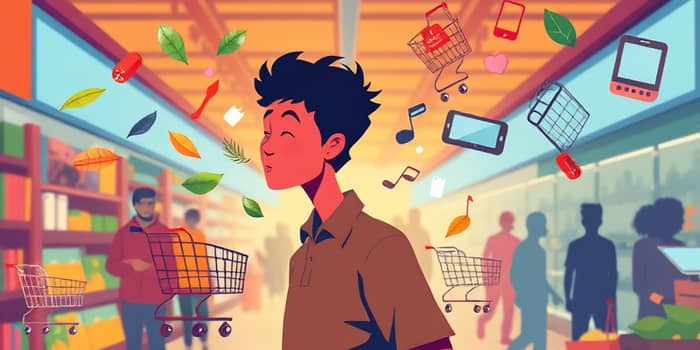
In a marketplace saturated with data and algorithms, understanding the subtle cues that guide consumer choices has become an art. Marketers who listen attentively become true market whisperers, gaining an edge by decoding the complex motivations of 2025 buyers.
The era of spontaneous, algorithm-driven shopping is fading. Today’s consumers demand intentionally planned purchases aligned with their deepest values. They scrutinize every recommendation, favoring community-driven insights over automated suggestions.
Marketers must shift from pushing products to cultivating genuine connections, inviting shoppers into niche communities where authenticity thrives.
Environmental concerns now shape purchasing behavior like never before. A remarkable 58% of global consumers are willing to pay more for eco-friendly products, and Millennials and Gen Z are even more resolute in demanding transparency.
PwC research reveals a sustainable products premium of 9.7%, while 30% of buyers have abandoned brands over ethical missteps. For urban shoppers, green credentials are no longer optional—they are a core part of brand identity.
Health-conscious consumers seek products that balance nutrition and indulgence. Since 2022, prebiotic sales have surged by 15% and protein-rich snacks by 22%. The modern shopper wants benefits without sacrifice.
Moreover, the emphasis on experiences continues to rise. Brands are responding with experiential loyalty programs that merge events, exclusive tastings, and community gatherings to foster deeper bonds.
Digital touchpoints remain pivotal, but trust is fragile. While social commerce searches have jumped 65% over five years, consumers increasingly lament echo chambers and demand human-led insights.
Brands that combine swift service with expert curation will lead the next wave of online retail.
Buy Now, Pay Later (BNPL) services are reshaping payment expectations. Currently used by 8% of U.S. consumers—with 13% of Millennials and 10% of Gen Z—BNPL has become a hallmark of modern convenience.
Offering multiple payment methods is no longer a luxury; it is a requirement. Companies that integrate flexible payment options into every channel will enjoy higher conversion rates and greater customer satisfaction.
Consumers are trading down in certain categories—favoring private labels and discount retailers—while splurging on unique experiences and health products. This paradox demands agile strategies.
Local brands benefit as shoppers crave community connection in uncertain times. Seamlessly integrating online, mobile, and in-store experiences has become nonnegotiable for retailers seeking to capture this nuanced behavior.
U.S. consumers enjoy three extra hours of free time per week compared to 2019, yet 90% of that time is spent solo. From fitness routines to online browsing, individuals curate personal experiences that reflect their priorities.
Brands must recognize this duality—offering solitary, on-demand options alongside communal events that speak to both independence and belonging.
Ninety-five percent of consumer goods executives prioritize new product introductions, and 80% are boosting investment in innovation. Rapid adaptation to emerging trends—whether in sustainable packaging or personalized nutrition—separates market leaders from followers.
Agile development teams that embed consumer feedback loops can anticipate shifts and deliver offerings that resonate on launch day.
While Gen Z drives trend-based purchases (40%) and is willing to pay up to 10% more for sustainable goods, Millennials spearhead digital experience expectations. Both cohorts seek curated human expertise that validates their choices.
Understanding the distinct values of each generation enables brands to tailor messaging and product assortments that appeal to specific mindsets rather than broad demographics.
The modern consumer is empowered, skeptical, and values-driven. To become a true market whisperer, businesses must cultivate trust through authenticity, transparency, and community engagement.
By listening intently, responding swiftly, and innovating relentlessly, brands can navigate the complex landscape of 2025 consumer behavior and emerge as leaders in a world where every purchase speaks volumes about personal identity.
References





